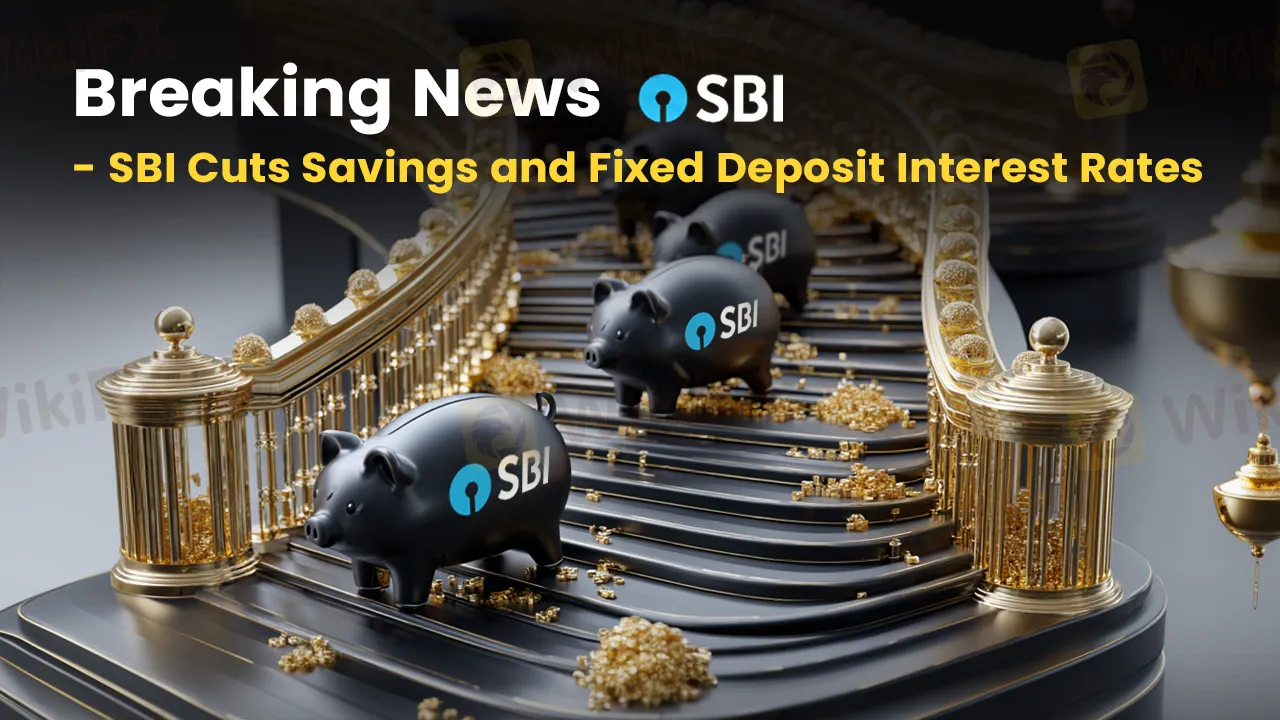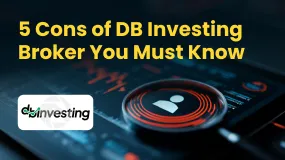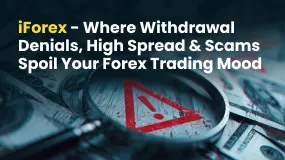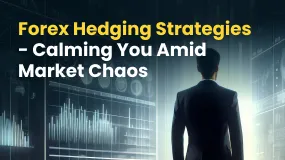简体中文
繁體中文
English
Pусский
日本語
ภาษาไทย
Tiếng Việt
Bahasa Indonesia
Español
हिन्दी
Filippiiniläinen
Français
Deutsch
Português
Türkçe
한국어
العربية
SBI Cuts Deposit Interest Rates Effective June 15, 2025 - Should You Move Some Funds into Forex?
Abstract:The State Bank of India (SBI), the country’s largest lender, announced that it has cut the interest rates on savings accounts and fixed deposits, effective June 15, 2025. Is the time ripe for forex investments? Let's find out!

Hello! As we were celebrating our weekend (June 14-15, 2025), the State Bank of India (SBI), the countrys largest lender, announced that it has cut the interest rates on savings accounts and fixed deposits, effective June 15, 2025. Surely, a mood breaker for all those wishing to build a financial journey through savings accounts and fixed deposits.
What Prompted a Rate Cut from SBI and How Much is the Decline?
The move comes after the RBI slashed the repo rate, the rate at which the central bank lends to commercial banks across India. Savings bank account interest rates have been reduced by up to 50 basis points across all account balances. Interest rates are a modest 2.50% per annum across balances.
See this snapshot -

Whereas fixed deposit interest rates have been slashed by up to 25 basis points for amounts below INR 3 crore on different tenures.
SBI has also cut the interest rates on Amrit Vrishti, a term deposit scheme, to 6.60% from 6.85%, effective June 15, 2025. Amriti Vrishtis special 444-day scheme also saw a decline in interest rates from 6.85% to 6.60% per annum.
Senior citizens and super senior citizens will continue to receive additional interest rates, the bank has mentioned on its website. Super senior citizens will receive an additional 0.10% over the interest rate applicable for senior citizens.
| Tenures | General Public | Senior Citizen | Super Senior Citizens (Interest Rates from June 15, 2025 | ||
| Interest Rates Before June 15, 2025 | Interest Rates from June 15, 2025 | Interest Rates Before June 15, 2025 | Interest Rates from June 15, 2025 | ||
| 7-45 Days | 3.30% | 3.05% | 3.80% | 3.55% | 3.65% |
| 46-179 Days | 5.30% | 5.05% | 5.80% | 5.55% | 5.65% |
| 180-210 Days | 6.05% | 5.80% | 6.55% | 6.30% | 6.40% |
| 211 Days-Less Than 1 Year | 6.30% | 6.05% | 6.80% | 6.55% | 6.65% |
| 1 Year-Less Than 2 Years | 6.50% | 6.25% | 7.00% | 6.75% | 6.85% |
| 2 Years-Less Than 3 Years | 6.70% | 6.45% | 7.20% | 6.95% | 7.05% |
| 3 Years-Less Than 5 Years | 6.55% | 6.30% | 7.05% | 6.80% | 6.90% |
| 5 Years-Up to 10 Years | 6.30% | 6.05% | 7.30% | 7.05% | 7.15% |
Interest Rates May Continue to Decline
The RBI has cut the repo rate by 100 basis points i.e. 1% so far in 2025. Currently, the repo rate stands at 5.50%. As inflation is on a downtrend, there‘s a window for one more rate cut soon. India’s CPI or Consumer Price Index-based inflation eased to 2.82% in May 2025. Its the lowest since Feb 2019. The 2.82% inflation reflects easing prices across the country, which, however, needs more investments to drive economic growth beyond 8% consistently to achieve its objective of being a Developed Nation by 2047.
Amid Declining Interest Rates, Is it Worth Moving Some Funds to High-return Instruments?
The low interest rate pattern is similar across banks. So, amid declining interest rates, one should rejig their investment portfolio by allocating some assets to high-return instruments such as forex.
What is the Forex Market and Why You Should Invest in It?
Foreign exchange trading is trading in currency pairs through various contracts - Spot, Futures and Options. The price moves throughout the day.
Spot contracts are where you buy or sell currencies immediately. The transaction is completed in two business days.
Futures contracts are an agreement to purchase or sell currencies at a predetermined price for a delivery at a specified time in the future.
Options contracts are where the agreement is made to buy or sell currencies at a predetermined price on or before the transaction date. The last two options act as a currency hedging mechanism.
Forexs return potential is high albeit with risks. Looking at the larger picture, one should take some risks to achieve the goal amount on time. Sticking to low-yield instruments such as fixed deposits will keep you behind in the wealth creation exercise.
But How to Get Started with Forex?
We acknowledge the support you may need to get started with Forex investments where currency prices fluctuate throughout the day. You can thus follow WikiFX, a leading broker information app. It highlights everything about the forex broker operating from various regions including India. We give a complete overview of whether they are regulated and licensed, how they are faring business-wise, the operation period, and ratings on various parameters. You can compare the brokers on these aspects and see which fits your needs better. A snapshot of some top brokers registered on our platform.

Disclaimer:
The views in this article only represent the author's personal views, and do not constitute investment advice on this platform. This platform does not guarantee the accuracy, completeness and timeliness of the information in the article, and will not be liable for any loss caused by the use of or reliance on the information in the article.
Read more

5 Cons of DB Investing Broker You Must Know
It's always advisable to read online review articles about forex brokers you are thinking to Invest your money with. The forex market has become increasingly unsafe due to the rise of fraudulent brokers. Review articles help you spot scam brokers and protect your money. Read this important article about DB Investing to stay fraud alert.

iForex - Where Withdrawal Denials, High Spread & Scams Spoil Your Forex Trading Mood
Are high spreads charged by iForex disallowing you to make profits? Do you feel that you will never be able to withdraw from iForex? It's nothing new! Read this exposure story where we have highlighted complaints from several investors.

Forex Hedging Strategies - Calming You Amid Market Chaos
Finding it hard to deal with the forex market volatility? Do those ups and downs in currency pair prices make you more nervous or worried? You need the right forex hedging strategies. As a concept, forex hedging is about strategically opening additional positions to stay immune against adverse forex price movements. It’s about offsetting or balancing your current positions by buying or selling financial instruments. As a trader, your risk exposure is reduced, hence limiting your potential losses.

Scam Alert: Cloned Broker Scams on the Rise
Reputed authorities like the FCA have issued warnings against brokers who act genuine but are actually fake brokers. They copy details such as logos, names, branding, and sometimes even employee appearances to trick investors and steal money from them.
WikiFX Broker
Latest News
Forex Hedging Strategies - Calming You Amid Market Chaos
Key Events This Week: ISM, Trade Balance And More Earnings
What Is Forex Currency Trading? Explained Simply
ASIC Regulated Forex Brokers: Why Licensing Still Matters in 2025
A Beginner’s Guide to Trading Forex During News Releases
Ultima Markets enters the UK and gains the FCA license
LSEG Announces £1 Billion Share Buyback Program
SEC Lawsuit Targets Real Estate Fraud Scheme by Joseph Nantomah
SkyLine Judge Community: Appreciation Dinner Successfully Held in Malaysia
Interactive Brokers: A Closer Look at Its Licenses
Currency Calculator


